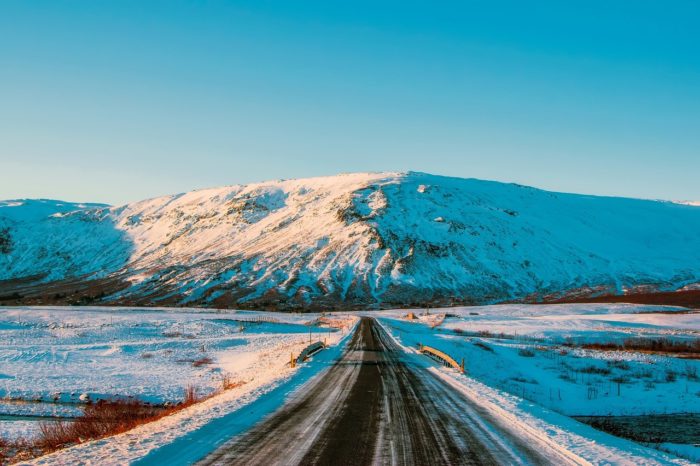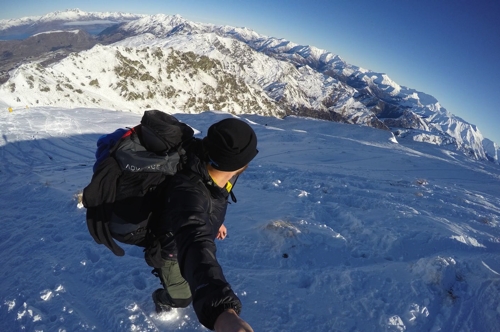Iceland is an incredible country, but it doesn’t come without its challenges. Being so far north of the globe, it has witnessed a plethora of interesting natural phenomenons. From volcanoes to glaciers to hot springs. Because of this, it means many of their roads are somewhat dangerous. Not all, of course, but it’s worth going into detail about.
The reason why Icelandic roads are somewhat notorious is because there’s really no better way to see Iceland. There are roads that run the circumference of several integral natural wonders, whilst there are other dangerous gravel roads that should be anticipated ahead of taking them on. This article will go into the different types of roads in this distant, whimsical country.
Ring Road
The Ring Road is perhaps the most important to know about if you want to see the major attractions. Ring Road, which is also known as Route 1 / N1, is a national road that circles around most of Iceland in one easy-to-follow road. It literally covers all four corners, hitting most of the coastal cities.
The Ring Road is 1,332 Kilometres long in total. Many see the start of the Ring Road as being Reykjavik, where the main national airport is, and it goes north to Blönduós and Akureyri. The road then rotates to the eastern city of Egilsstaðir, all the way down to Höfn, and finally cruises along the south coast back to Selfoss.
To see the whole of the Ring Road would essentially be to see most of Iceland. This isn’t really feasible for a 1 week holiday. If you want to stand a chance of actually enjoying each place you stop off at, without being in a rush, 2 weeks or more would be advisable.
Golden Circle
Whilst the Golden Circle isn’t necessarily a part of the Ring Road, they both have the same starting point. The Golden Circle is much shorter in length (300km), and is more busy as a tourist route. The Golden Circle is famous because in a short period of space, you will see many attractions. Some notable ones being the Thingvellir National Park, the Great Geysir, as well as the Gullfoss waterfall.
F-road
This is the main reason behind the notoriety of Icelandic roads. Whilst off-road driving is completely illegal in Iceland, the experience itself can still be achieved via driving f-roads. F-roads are essentially dangerous, non-tarmacked roads that access the highlands of Iceland. These can be great to get to some landmarks and sightseeing spots.
You are only allowed to drive on the f-roads in a 4×4 vehicle. This is extremely important. Car insurance companies will not cover you if you’re travelling on these restricted roads with a 2-wheel vehicle — not to mention it would be reckless.
Another extremely important part of f-roads is that they’re not accessible all year round. They are deemed too dangerous in winter conditions, and so you can only travel on them from June onwards for a few months.
Gravel roads
So, let’s assume you plan to avoid f-roads in their entirety because you’re worried, or you’re going in winter. Sticking strictly to the Ring Road (described above) will still leave you longing for a 4×4 regardless. Around 20% of the 1.3k+ km Ring Road remains gravel. Gravel roads are not necessarily dangerous, but they’re bumpy and they may force you to drive very slowly. The better your suspension and the bigger your tires, the faster you will be able to drive.
South Road
Driving along the south coast isn’t just one road, but it’s a popular route nonetheless. This is where you will find the 65m tall Seljalandsfoss waterfall. A bit further along is Skógafoss, another 60m waterfall, which comes from Eyjafjallajokull and Myrdalsjokull — two glaciers. You can actually climb up this waterfall in 370 steps, giving you an incredible view and a very different perspective of the landmark.
Along the south road, many will stop off at Sólheimajökull, which is a glacier tongue with a snow cap that covers a volcano. Of course, many of these hikes are better done with a tour guide who will keep you safe and informed. The south road will also take you into the Golden Circle eventually as you head west, where you can see sites such as the Thingvellir National Park and hotsprings.
As we can see, Iceland is more than just a bunch of interesting landmarks. The journeys between them is also part of the experience. From bumpy f-roads to the convenient Golden Circle, there is no better way to see Iceland than to drive it yourself. The sites you want to see will then determine which type of car you will get. You can still lap the country on the Ring Road in a tiny 2-door, 2-wheel drive car — or if you want to get stuck into the highlands, then a 4-wheel drive will be necessary. Many also opt for a campervan, so they can save money on hotels and fully experience the nature by camping out in it. A 4×4 campervan rental becomes a practical and safe choice in this situation. It can also provide the essentials and luxuries that hotels offer.



 Backpacking Matt
Backpacking Matt 



